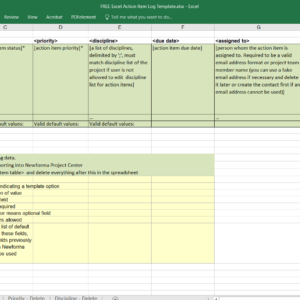Introduction
A project budget is a critical tool that project managers use to plan, track, and control project spending. A well-crafted budget can help keep a project on track and prevent cost overruns. A project budget typically includes a variety of costs, such as labor, materials, equipment, and other expenses.
Project managers should work with their teams to develop a detailed budget for each project. The budget should be reviewed and approved by the project sponsor before work begins.
The following are some important things to keep in mind when creating a project budget:
What Is a Project Budget?
A project budget is a financial plan that outlines the estimated cost of all the resources needed to complete a project. The budget includes all the anticipated expenses for the project, such as labor, materials, equipment, and other costs.
Project managers use budgets to plan, track, and control spending on a project. A well-crafted budget can help keep a project on track and prevent cost overruns.
Why You Need a Project Budget
A project budget is an important tool that project managers use to plan, track, and control project spending. A well-crafted budget can help keep a project on track and prevent cost overruns.
Project managers should work with their teams to develop a detailed budget for each project. The budget should be reviewed and approved by the project sponsor before work begins.
What Is Project Budgeting?
Project budgeting is the process of creating a budget for a project. The budget should include all the anticipated costs for the project, such as labor, materials, equipment, and other expenses.
Project managers use budgets to plan, track, and control spending on a project. A well-crafted budget can help keep a project on track and prevent cost overruns.
Project Budgeting Approaches
There are several different approaches that project managers can use to develop a budget for a project. The most common approach is to use historical data from similar projects.
Another approach is to use bottom-up budgeting, which involves estimating the cost of each individual task that needs to be completed.
More on Project Budget Management
Project budget management is the process of creating, tracking, and controlling the budget for a project. Project managers use budgets to plan, track, and control spending on a project. A well-crafted budget can help keep a project on track and prevent cost overruns.
Project Budget vs. Project Estimate
A project budget is a financial plan that outlines the estimated cost of all the resources needed to complete a project. A project estimate is a preliminary estimate of the cost of a project.
Project managers should create a budget for each project. The budget should be reviewed and approved by the project sponsor before work begins.
Project Budget vs. Budget Proposal
A project budget is a financial plan that outlines the estimated cost of all the resources needed to complete a project. A budget proposal is a document that request funding for a project.
Project managers should create a budget for each project. The budget should be reviewed and approved by the project sponsor before work begins.
How to Make a Project Budget
Project managers should work with their teams to develop a detailed budget for each project. The budget should be reviewed and approved by the project sponsor before work begins.
Here are some tips for creating a project budget:
Project Budgeting Tips
Here are some tips for creating a project budget:
- Work with your team to develop a detailed budget for each project.
- The budget should be reviewed and approved by the project sponsor before work begins.
- Use historical data from similar projects to develop your budget.
- Use bottom-up budgeting to estimate the cost of each individual task that needs to be completed.
- Create a budget for each project. The budget should be reviewed and approved by the project sponsor before work begins.
- Use project budgeting tools to help you create and track your budget.
- Compare budgets from similar projects to get a better understanding of costs.
- Consider different scenarios when creating your budget.
- Use project budgeting tools to help you create and track your budget.
- Review your budget regularly and make adjustments as needed.

